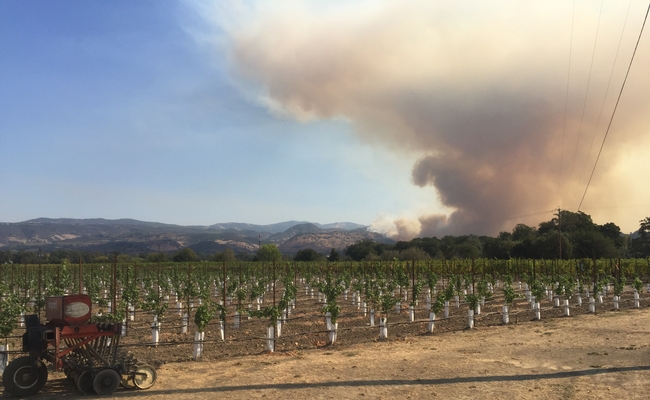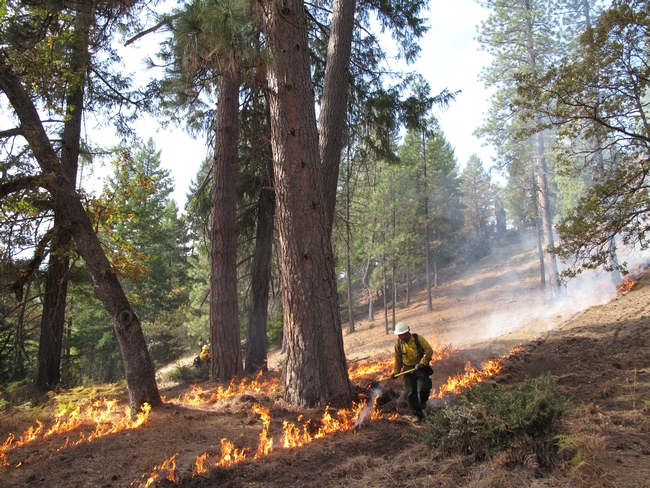Posts Tagged: Yana Valachovic
Preparing to evacuate during wildfire? These checklists can help
To help people prepare, CAL FIRE has a checklist for evacuation online at http://www.readyforwildfire.org/Evacuation-Steps. UC Agriculture and Natural Resources scientists contributed to the research behind the recommendations.
A one-page checklist online at http://disastersafety.org/wp-content/uploads/2016/07/IBHS-Wildfire-Last-Minute-Checklist.pdf, also based on research by UC ANR scientists, is available from the Insurance Institute for Business & Home Safety.
Napa County residents have been told to be prepared in case they need to leave.
“We have team members tending to their own homes and or family's needs, providing support in shelters, and being available for immediate clientele needs in any way they can,” said David Lewis, UC Cooperative Extension director in Napa and Marin counties. “We look forward to calling upon UC colleagues with more experience to support our communities in the long recovery period. For the immediate future, we will stay focused in our efforts to support evacuation and shelter efforts – personal safety and needs are priority one until the fires no longer pose a threat.”
The main thing to remember when preparing to evacuate is to protect your life first.
“Don't die trying to prepare your house before you leave,” said Yana Valachovic, UC Cooperative Extension director and forest advisor in Humboldt and Del Norte counties. “Monitor the situation, watch the wind directions, and listen to all emergency personnel.”
To receive timely updates on fire conditions, Brian Oatman, UC ANR Risk & Safety Services director, uses Nixle. “While some communication methods may not work due to outages, the more sources we have, the better the chance that the message gets through,” Oatman said. To sign up for text alerts, visit http://www.nixle.com or text your zipcode to 888-777 to opt-in.
“We have coordinated with CropMobster to create a resource list at https://sfbay.cropmobster.com/bay-area-fire-resources where anyone can post any needs or offer help of any kind,” said Stephanie Larson, UC Cooperative Extension director in Sonoma County. “UCCE Sonoma has also created a Disaster Recovery for Agriculture Operations at http://cesonoma.ucanr.edu/Disaster_Resources for homeowners and managers of rangelands. UCCE is working closely with Sonoma County to provide UC ANR resources to assist with the recovery of our community that has been devastated by this fire.”
In Yuba County, the Cascade fire is 45 percent contained as of Oct. 12. “Evacuation orders are being lifted in parts of Yuba County,” said Janine Hasey, UC Cooperative Extension director for Sutter and Yuba counties. “Kate Wilkin, our new UC Cooperative Extension forestry, fire science and natural resources advisor in Sutter, Yuba, Butte and Nevada counties, has assembled resources for residents who are returning to their homes at http://cesutter.ucanr.edu/Fire_Information. We will be updating the website with more recovery information in the coming days.”
Firefighters from across western US to train in N. California
Firefighters from six states will join forces in northern California next week, but they won't be putting fires out—they'll be lighting them.
After a year of planning, a two-week controlled-burn training event will be held from Oct. 13 to 26. During the event, 30 fire professionals from California, Oregon, Washington, Nevada, Utah and Maine will be working and training with local hosts across northern California, with sites around Orick, Hayfork and Redding.
Last year, a similar event brought 40 firefighters from across the country to help the National Park Service and private landowners complete controlled burns as part of restoration and wildfire hazard reduction projects. Controlled burns are an important tool for creating fire safe communities, restoring resilient forests, and nurturing native plants and wildlife.
This summer, a wildfire that threatened the town of Weaverville was stopped when it hit an area burned eight months prior in a controlled burn. Previously burned areas were also critical to fire suppression efforts on the 2013 Rim Fire in the Sierra. These types of trainings are becoming increasingly important as drought and climate change increase the risk of severe fire, and land managers require new skills and experience to restore beneficial fire to the landscape while protecting communities and ecosystems from more destructive wildfires.
The Northern California Prescribed Fire Council and The Nature Conservancy are the main organizers of this year's event, which is designed to make the forests more fire resilient while at the same time helping fire professionals build new skills and partnerships. The same training model is being used across the country, with events held this year in Nebraska, Virginia, New Mexico, and in the mid-Klamath region of Humboldt County.
Participants in the fire training will include fire practitioners from local fire departments, government agencies, universities, non-governmental organizations, and local landowners. The training will be hosted by Redwood National Park, Whiskeytown National Recreation Area, and the Watershed Research and Training Center. In addition to working on the controlled burns, participants will learn about local fire ecology, laws and regulations, and how collaboration contributes to greater conservation.
These controlled burns will only be implemented if weather conditions meet the parameters for a safe, effective operation. Thanks to the recent rains, we are expecting conditions to line up nicely.
For more information, contact Yana Valachovic, UC Cooperative Extension Forest Advisor at (707) 445-7351 or yvala@ucanr.edu.


